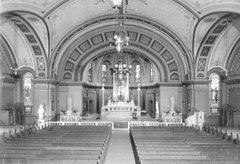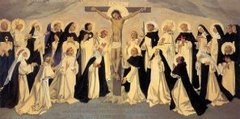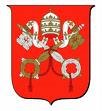"Not Catholic"
You can lead this horse to water, but rather than drink, he usually comes back with "But we agree on essentials..."
Now I see that the obvious has long been obvious; here's James Cardinal Gibbons in "The Faith of our Fathers" in the chapter on the perpetuity of the church:
A remark of De Maistre is worth quoting: "If Protestantism bears always the same name, though its belief has been perpetually shifting, it is because its name is purely negative, and means only the denial of Catholicity, so that the less it believes, and the more it protests, the more consistently Protestant it will be. Since, then, its name becomes continually truer, it must subsist until it perishes, just as an ulcer disappears with the last atom of the flesh which it has been eating away."
There is something almost current in his description of the rise and fall of Arianism:
The Arian schism, soon after its rise, spread rapidly through Europe, Northern Africa, and portions of Asia. It received the support of immense multitudes, and flourished for awhile under the fostering care of several successive emperors. Catholic Bishops were banished from their sees, and their places were filled by Arian intruders. The Church which survived the sword of Paganism, seemed for awhile to yield to the poison of Arianism. But after a shor career of prosperity, this gigantic sect became weakened by intestine divisions, and was finally swept away by other erros which cam following in its footsteps.One does not have to stretch the immagination too hard to see the "now" in this description.
...and now for something completely different, Will writes:
Did I mention this is the biggest grass hut in the world? It's about as tall as a four story building. The picture I'm sending now is me and Davis (a teacher at the Anglican school. He was my ride today) sitting in front of a shrine where four generations of Bugandan kings are buried.

This kings were interesting characters. One of them killed 22 Catholics (now saints, I think you've told me about them before [St. Charles Lwanga and companions, martyrs of Uganda]) because he was scared the "Kingdom of Heaven" would overtake his kingdom! And these guys were polygamists who would put fundamentalist Mormons to shame. One had 112 wives and 136 kids (oh, the nagging!). The most conservative one of the four still had 32 wives and had one kid with each wife. The tour guide jokingly called this 'family planning'. Which reminds me, with all that McLovin going around these guys have lots of ancestors, and all of the tour guides are descendants of these kings.





















No comments:
Post a Comment